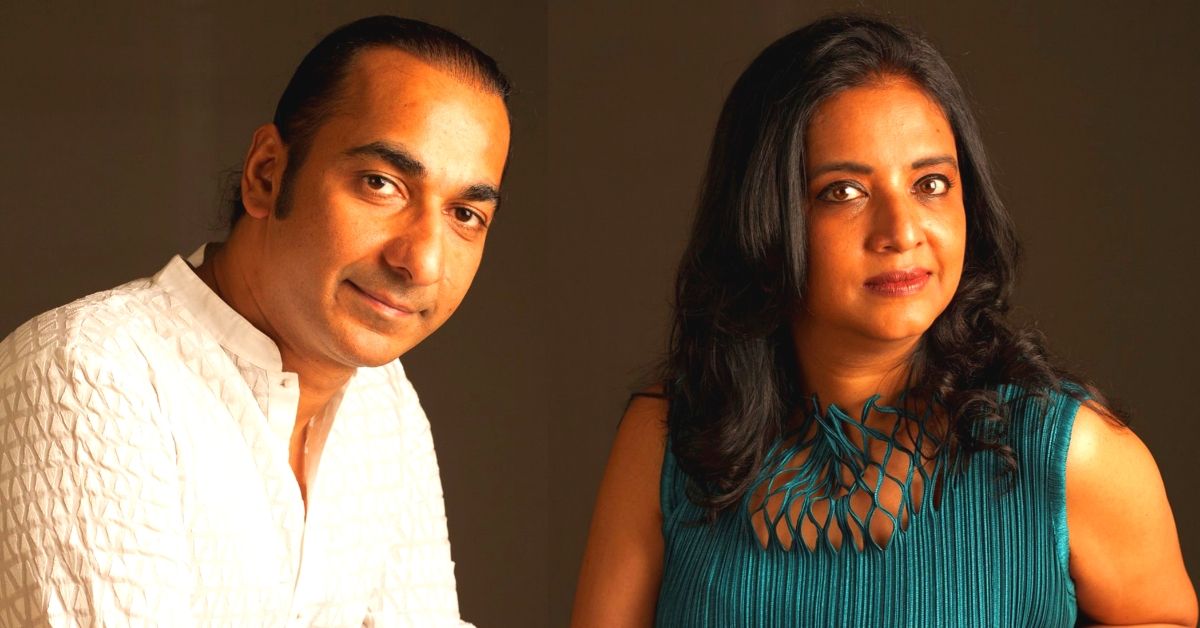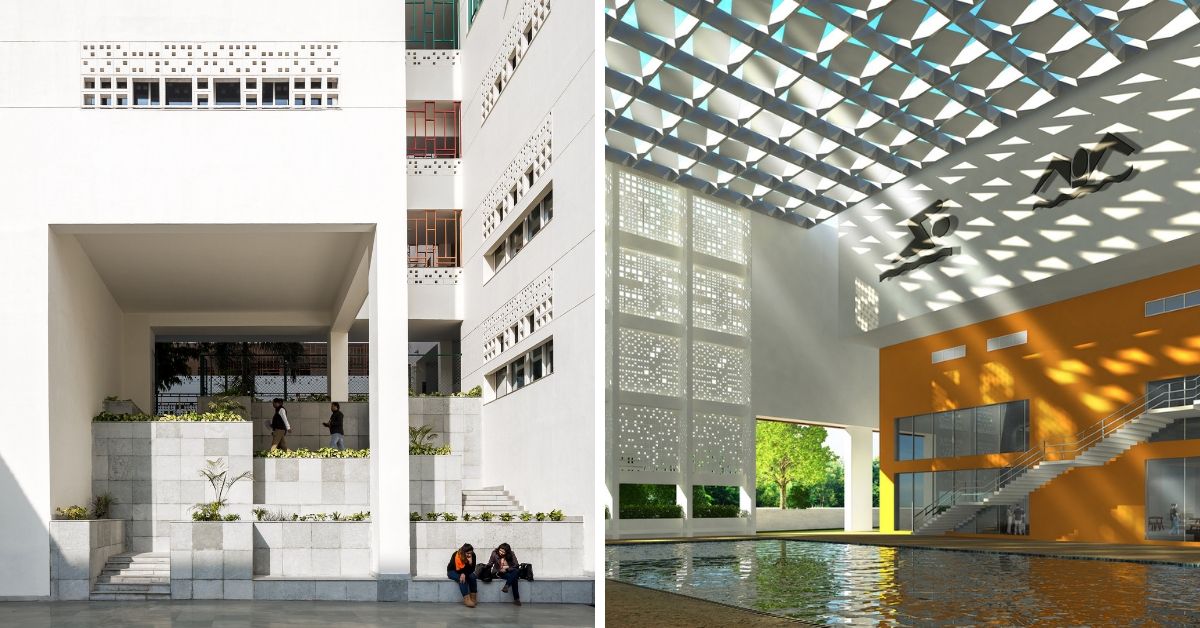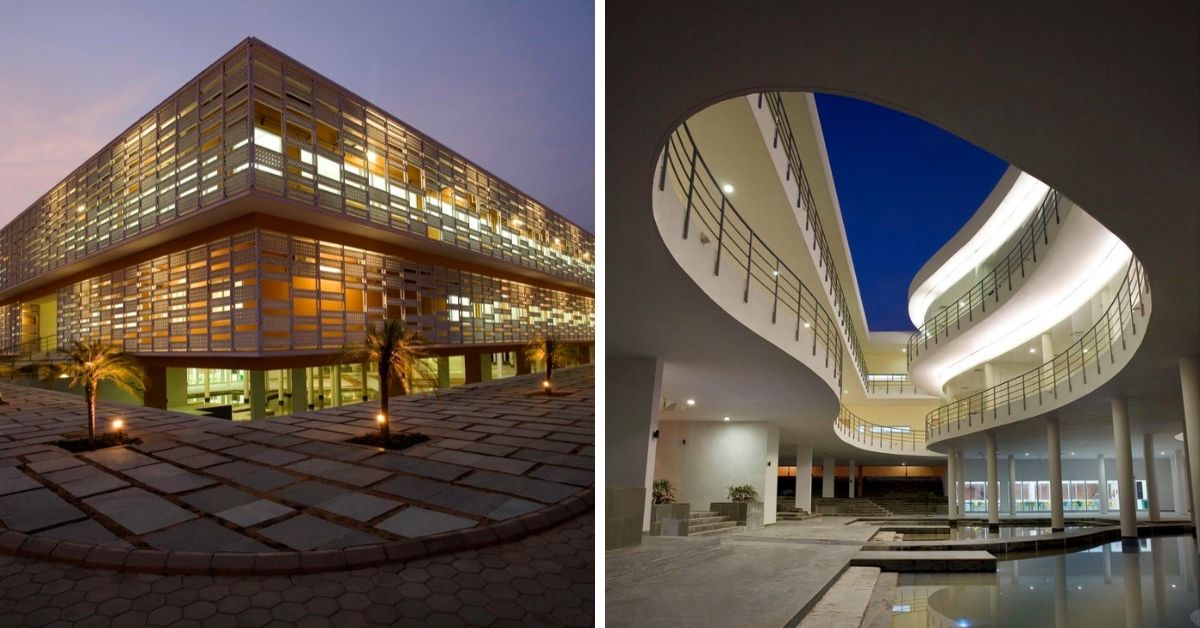Jaalis, Baolis & More: Architect Couple Uses Ancient Designs to Make Sustainable Buildings!
Integration of traditional concepts like jaalis, chajjas and verandas helps the buildings consume up to 75% less energy than usual certified green buildings!

What started in a tiny garage in Delhi, has now grown into one of India’s renowned eco-friendly architecture firms. Sustainability, Optimisation, Unique and Liveability is the ‘SOUL’ mantra that Morphogenesis diligently follows.
Alumni of Delhi’s School of Planning and Architecture and the prestigious Architectural Association School of Architecture in London, Manit and Sonali Rastogi co-founded Morphogenesis in 1996.
Take a step towards protecting the environment. Check out sustainable and handcrafted accessories for your home and kitchen here.
We started Morphogenesis as a two-person practice working out of a tiny garage, with no certainty of what the future would unravel for us, yet with complete clarity of purpose – to contribute to the definition of and to build a global discourse on contemporary Indian Architecture, says Sonali.
While Sonali studied Housing and Urbanism, Manit got a degree in Energy and Environmental studies.

The husband-wife duo returned to India in the 90s to put their knowledge into practice and bring an architectural evolution.
I believe we were fortunate to be in India at a time when there was a paradigm shift in the economy which was growing and liberalising, because that lets us experiment with the evolution of corporate offices, shopping complexes, educational institutes, etc. that were pushing the boundaries for new forms of education, health facilities, IT campuses, and more. This helped us get our first project Apollo Tyres Corporate office in Gurugram, says Manit.
Though it was fairly a new industry that the two amateurs were venturing into, the economic shift that India was undergoing during the 90s helped the duo take risks and experiment with their ideas and innovative methods.
The firm uses passive techniques of cooling such as thermal buffers, evaporative cooling, ventilation strategies and water reservoirs.
By integrating traditional concepts like jaalis, chajjas and verandas, all the buildings are designed in a way that consumes 75 per cent less energy than the certified green buildings, like in the case of The British School, Delhi.

Inspired by traditional Indian courtyards, the huge verandas in The British School are constructed to incorporate the old trees in the premises.
Eaves or chajjas provide shade, helping 50 per cent of the building to remain cool throughout the year.
Further, the baolis or subterranean stepped structures harvest rainwater. The jalis (perforated surfaces) lock direct heat and yet allows natural air and light to pass.
The consciously chosen architecture of the eco-friendly school building is inspired by its tagline – ‘An International education with an Indian soul’.
The idea was to inculcate in students a culture of living with climate and imbibing a lifelong learning of adapting to the environment. The architectural response–deeply rooted in the local–provides a strong cultural context, creating a learning environment that promotes social cohesion, says Manit.
With sustainability being the company’s core philosophy, the architect-couple uses ancient techniques of architecture to construct modern buildings.

All the construction materials are sourced locally within a 500 km radius of the site. This not only reduces carbon footprint by using the existing materials but also eliminates the transportation cost, thus bringing down the overall cost of the building.
Constructing a baoli or a pond, surrounded by walls, is another cooling method that Morphogenesis uses. This way, the earth is used as a heat sink, and as the water evaporates, it brings the overall temperature down.
How did they (ancestors) think up something so elaborate and yet so simple in its basic philosophy? How do you begin to think that you can dig into the ground and use the earth as a heat sink, have access to water, put a pavilion into it so that it’s comfortable throughout the year? It takes a lot of technology for us to think up something that simple now, Manit tells CNN.
Thanks to this 1500-year-old concept, the temperature inside The Pearl Academy in Jaipur is 20 degrees less than the outside temperature.

Another feather in the firm’s cap is the 140-acre under-construction Infosys campus in Nagpur being designed in a way that reduces energy and water consumption needs to one-fifth of what is consumed in a typical office.
This lowered requirement is serviced by a 30-acre on-site solar plant, resulting in zero energy from the grid. Zero water dependence is achieved by creating a reservoir on site that has been designed as a lake that adjoins the existing water tank in the West and is fed by incident rain and rainwater. As for biodegradable waste, it is treated on-site through a bio-gas plant, explains Manit.

In its 23-year-old journey, the firm claims that the total amount of land it has constructed green buildings on is approximately 50 million sq feet.
We have successfully created exemplars that have conservatively resulted in over nine million sq. metre of built environment benefitting over 560,000 inhabitants. Our construction has also saved 22 billion litres of freshwater, 4.1 billion kilowatts of energy. Overall speaking, it has led to a reduction in carbon dioxide emissions by 3.3 billion kilos, the duo claims.
Speaking of challenges, the couple shares:
We cannot answer what the biggest challenge is, but we can say that everyday must have a challenge, and if it doesn’t, then we find it. There is a gap between academia and the profession with both having different pursuits. While the profession deals with the ground level realities but doesn’t have time for any research, the opposites are applicable for academia.
To bridge this gap, the architectural firm has designed an in-house ‘Knowledge Management System’ that gives information of all their projects done to date. It gives details about what worked best and what didn’t. The software is accessible to all its employees, which makes disseminating knowledge easier.
Apart from championing the environmental cause, they also take pride in terms of being the ‘first ones’. The British School was the first net-zero energy enabled school in India. The winner of the Best Learning Building Award for Pearl Academy, Morphogenesis is the first Indian architectural firm to win a World Architecture Festival award in 2009.

It is the only firm in the World Architecture 100 list, with over 50 per cent of women across all levels.
With projects in eight countries, 95 International and National Awards and 750+ publications globally, it is the first Indian firm to be awarded the Singapore Institute of Architects Getz Award in 2014.
In an age where carbon-producing cement is a go-to construction material, green architecture firms like Morphogenesis are on the right track to a sustainable future.
To know more about Morphogenesis visit here.
Also Read: Building Low-Cost Green Houses Since 1996: Architect Brings Back Mud Homes In India!
Image Courtesy: Morphogenesis
(Edited by Saiqua Sultan)
Like this story? Or have something to share?
Write to us: [email protected]
Connect with us on Facebook and Twitter.
If you found our stories insightful, informative, or even just enjoyable, we invite you to consider making a voluntary payment to support the work we do at The Better India. Your contribution helps us continue producing quality content that educates, inspires, and drives positive change.
Choose one of the payment options below for your contribution-
By paying for the stories you value, you directly contribute to sustaining our efforts focused on making a difference in the world. Together, let’s ensure that impactful stories continue to be told and shared, enriching lives and communities alike.
Thank you for your support. Here are some frequently asked questions you might find helpful to know why you are contributing?


This story made me
-
97
-
121
-
89
-
167













